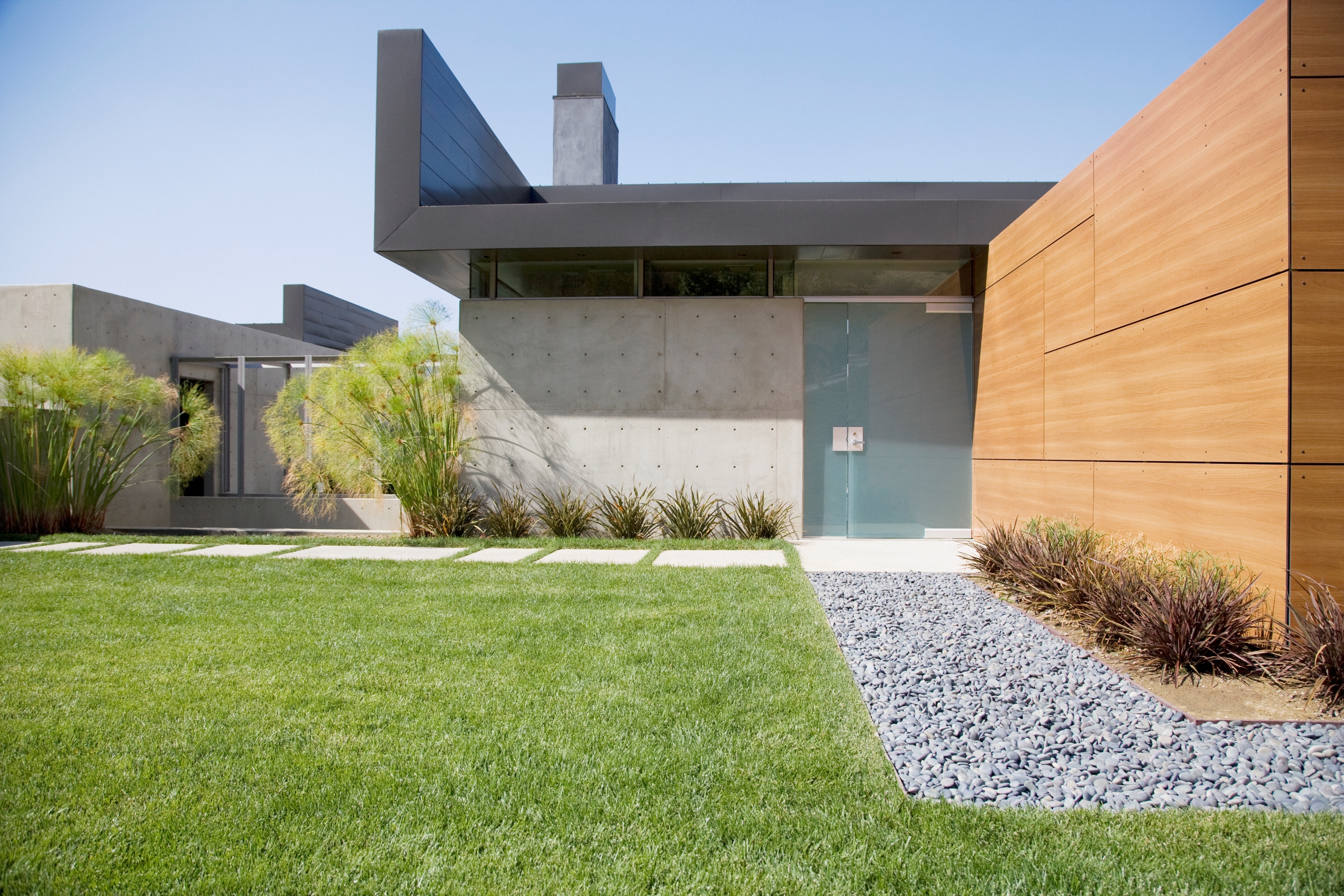
We might think of landscaping as designing our outdoor space with beautiful borders, flourishing flowerbeds, and luscious green lawns, but there's a whole lot more to it than that. If you're here, you're getting down to the nitty-gritty of landscaping, and you'll want to know much it costs to regrade a yard.
Yard regrading doesn't only make your backyard look better, but it makes it far more functional, too. The problem is, it's also a job that involves a lot of work and so it shouldn't surprise you to learn that it doesn't come cheap, either.
You've convinced your partner that the job itself is a worthy investment, but now you need to give them a figure. The problem is, knowing how much you should expect to pay will differ hugely depending on the size of your yard and the work involved. Luckily, that's why we're here to help. If you're preparing to splash some cash on this costly (but likely essential) landscaping job, here's what you need to know, including some ballpark figures from experts.
What is involved in regrading a yard?

If you're unsure what it means to regrade your yard, it essentially involves leveling out the land. This can be done for several reasons such as improving drainage and preventing erosion, or simply to level out an uneven surface.
It might be that your backyard was built on a gradient, or the ground has become uneven after a period of time. As Gene Caballero, co-founder of GreenPal, explains: 'Over time, yards can develop low spots, leading to standing water issues, which can damage your home's foundation and lawn.'
So what does the process involve? 'Regrading your lawn usually means bringing in a machine to smooth out the surface and make the lawn more functional,' says Quinten O'Dea, professional landscaper and owner of Q&A Landscaping. 'Most of the time people reach out to us for regrading, they want to eliminate the humps and dips in their lawn and improve the grass.'
To level out the ground, a skid steer is typically used to cut away any unwanted humps and redistribute the dirt to the low areas. 'Usually, we bring in additional screened topsoil to assist in the regrading and improve the soil quality,' says Quinten. 'Depending on the severity of the issue, we can power rake whole sections of the yard which is like a big roto-tiller that pulverizes the dirt and redistributes the loose soil evenly. We'll do this over whole sections which results in a really smooth lawn with minimal imperfections.'
What are the different cost factors of regrading a yard?

As such an intensive job it's not surprising that the work doesn't come cheap, but there are plenty of different cost factors involved asides from the regrading process itself.
'While the size of the area to be regraded is the main driver of cost, the existing soil depth and quality play a significant part in the cost determination of a regrading project,' explains Quinten. 'Another large factor is machine access to the area and whether or not there are any items like stumps or roots causing the grading problems that will need to be fought through.' Due to the size and ease of access, this often means a front yard is cheaper to regrade than a backyard.
Depending on the type of job, there's often other work that has to be completed afterward that you might not have considered. This will incur an additional cost, unless, of course, you decided to do them yourself (but we'd always recommend a professional).
'A significant part of regrading a lawn which is sometimes more costly than the regrading itself, is planting new grass in the disturbed areas of grass after the grading,' says Quinten. Other work that might be necessary is cutting a swale into a yard to direct water away from a house, or cutting into a hillside to extend the flat space in the yard.
How much does it cost to regrade a yard?

With all that considered, it's clear that the cost of regrading a yard will differ hugely depending on the space in question. Whatever the case, you should expect it to cost a pretty penny. As Quinten notes: 'On average, a lawn regrading project can range between $5,000-$10,000 depending on the area.'
Don't be put off by that sum, though. In many cases, regrading a lawn is essential to maintain its proper function and to avoid even costlier work further down the line, especially where drainage is concerned. If you have a small garden, you might find that the cost to regrade your space is significantly lower than this figure, anyway.
'Regrading can sometimes start at around $500 for smaller projects, while more moderate regrading with some equipment rental typically ranges from
$1,000 to $3,000,' says Gene. 'On average, homeowners might spend between $1 to $3 per square foot, though this can vary based on regional pricing and specific
project requirements.'
As both Gene and Quinten note, it's important to recognize these are general estimates. 'It's essential to get multiple quotes and ensure that the chosen contractor understands your needs and provides a comprehensive service,' Gene adds. 'While regrading might seem like an upfront investment, it's crucial for preventing long-term water damage and landscape issues, and it ensures a healthy lawn and a solid foundation for your home.'







